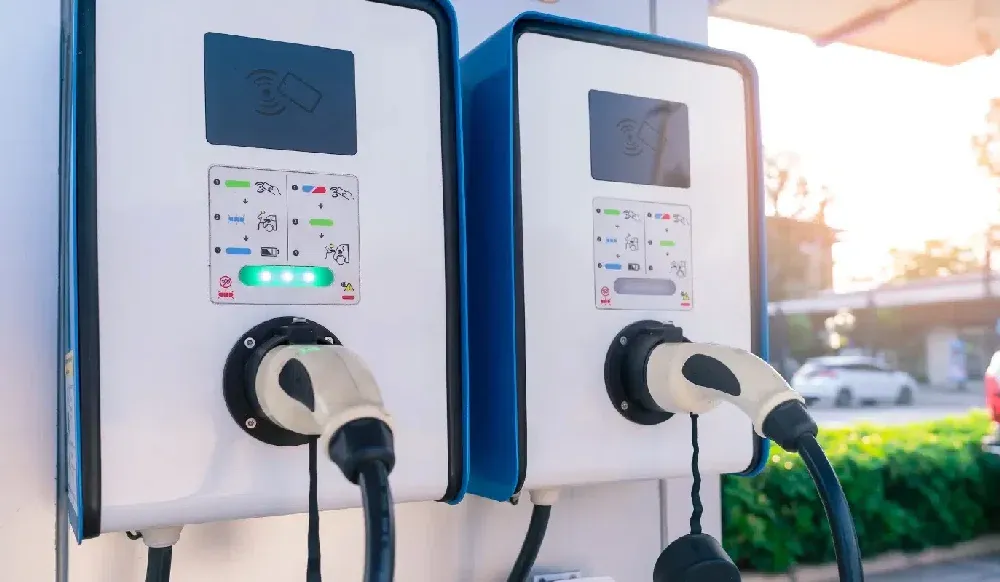Dynamic Load Balancing Electric Vehicle Chargers: Enhancing Efficiency and Grid Stability
Dynamic Load Balancing Electric Vehicle Chargers: Enhancing Efficiency and Grid Stability
With the rapid adoption of electric vehicles (EVs), the demand for reliable and efficient China EV charger infrastructure is growing significantly. Centralized charging stations—such as those in corporate parking lots or public areas—often face challenges in managing power loads and avoiding congestion. Traditional load balancing systems may fall short in these high-demand environments. Dynamic Load Balancing (DLB) EV chargers offer a smart solution by optimizing charging efficiency and maintaining the operational stability of the power grid.
What is Dynamic Load Balancing?
Dynamic Load Balancing is an intelligent system that automatically adjusts an EV charger's power consumption in real time based on the total electrical demand and the available capacity of the grid. This adaptive mechanism ensures that charging occurs at the highest possible speed without overloading the system.
For example, during periods when household appliances like ovens or washing machines are running, the DLB charger reduces its power draw to avoid exceeding the system's capacity. Once the load from other appliances decreases, the charger increases its power usage, maximizing charging speed without compromising electrical safety.
What is Static Load Balancing?
Static Load Balancing operates based on fixed parameters. In this system, a predetermined power limit—such as 8kW for an 11kW charger—is set to ensure the charging process never exceeds the system's safe threshold. While not as adaptive as DLB, static load balancing provides reliable protection against overloads in environments with predictable energy usage.
When to Use Dynamic vs. Static Load Balancing
| Load Balancing Type | Ideal Application | Key Features |
|---|---|---|
| Dynamic | Large-scale installations (commercial, public, fleet) | Real-time power adjustment, grid protection, optimal efficiency |
| Static | Residential or small business settings | Fixed power limits, simple setup, cost-effective |
Dynamic load balancing is best suited for commercial hubs where multiple EVs charge simultaneously and energy demands fluctuate. Static load balancing is ideal for homes or smaller setups with consistent, lower power demands.
How Dynamic Load Balancing Works
A dynamic load balancing EV charger consists of two main components:
- Charger Unit: Connects to the vehicle and supplies power. It adjusts output from as low as 3.7kW to as high as 90kW, depending on EV requirements and real-time grid conditions.
- Control Unit: Acts as the system’s brain, continuously monitoring grid load and communicating with the charger and, when applicable, with other chargers and the utility grid. It adjusts power output dynamically to maintain grid balance and prevent overloads.
Key Benefits of Dynamic Load Balancing
1. Reduces Charging Congestion
DLB systems intelligently distribute power across multiple chargers, minimizing vehicle wait times and enhancing user experience at busy charging stations.
2. Improves Charging Speed
Vehicles with high battery capacities benefit from prioritized charging. DLB ensures these vehicles receive higher power when available, reducing overall charging time.
3. Protects Grid Stability
By adjusting output based on real-time conditions, DLB mitigates risks of circuit overloads and main fuse trips. This prevents disruptions and promotes sustainable grid operation.
4. Energy Optimization & Network Protection
- Real-Time Monitoring: Continuously tracks total consumption and dynamically responds to changes.
- Smart Power Allocation: Ensures optimal energy use without compromising other electrical devices.
- Load Shaving: Limits power during peak times, conserving energy and reducing operational costs.
Practical Application Example
Consider a commercial parking lot with 20 EVs charging simultaneously. Without DLB, the combined load might exceed the building’s electrical capacity, causing safety risks or blackouts. A DLB system evaluates available power in real-time and intelligently allocates it across the chargers. Charging is prioritized based on vehicle needs, time of use, and power availability, ensuring efficiency and safety.
The Future of Charging Infrastructure
As electric mobility accelerates, dynamic load balancing will become a cornerstone of modern charging infrastructure. Its ability to enhance user convenience, boost energy efficiency, and maintain grid reliability makes it indispensable in the transition to a fully electrified transport ecosystem.
Conclusion
Dynamic load balancing EV chargers are a critical innovation in today’s EV ecosystem. By intelligently managing energy distribution and ensuring system-wide stability, they offer a scalable, future-proof solution for both commercial and residential environments. As technology advances, the adoption of DLB will play a key role in building a smarter, more resilient charging network that supports the widespread use of electric vehicles.Know more about Google SEO Directory